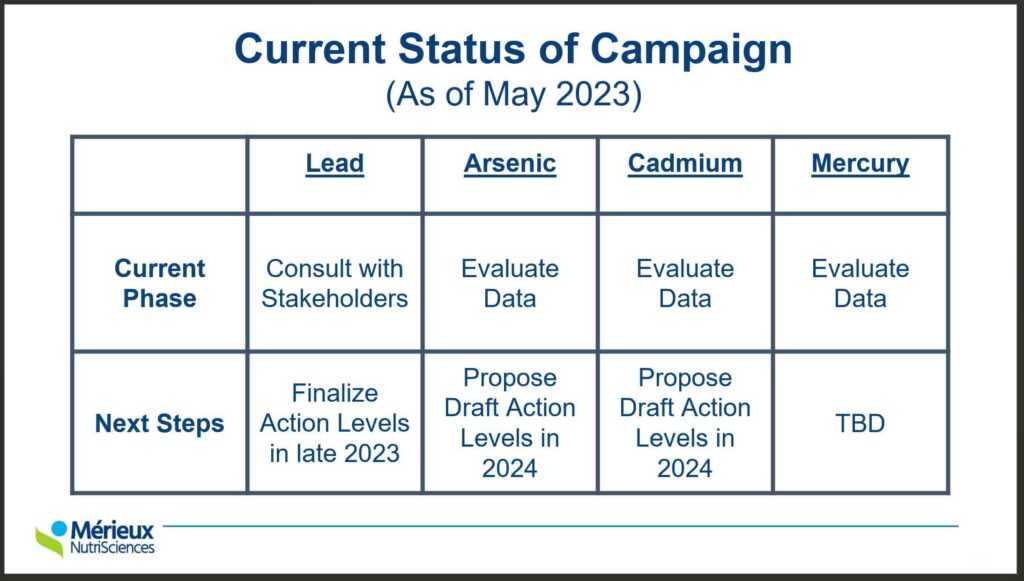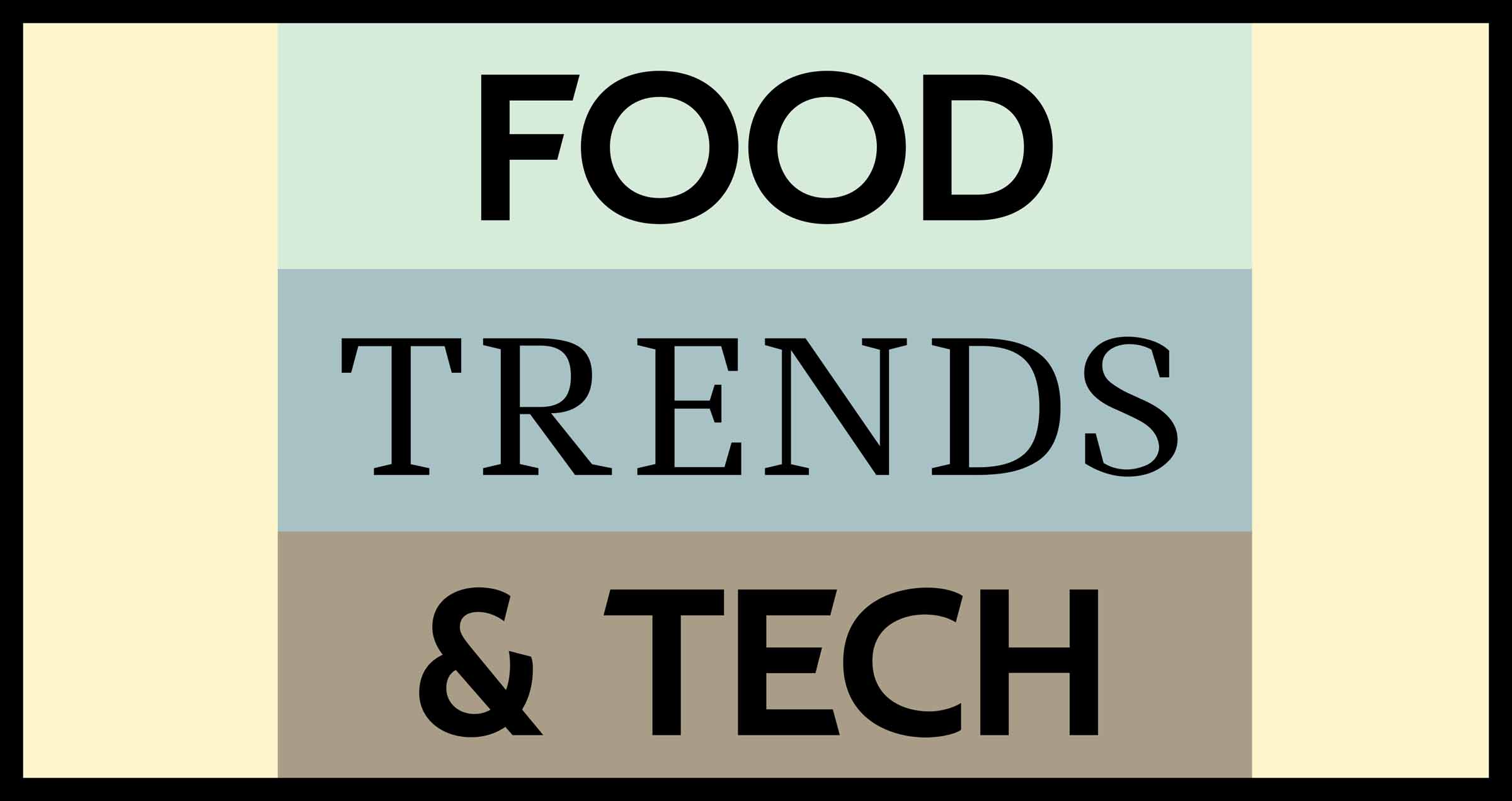The Food and Drug Administration’s (FDA’s) new Closer to Zero initiative focuses on the exposure of infants and children to heavy metal contamination in food commonly eaten. Due to these forthcoming regulations, manufacturers need to know this initiative’s challenges and practical implications from a technical, regulatory, and reality-based perspective. In their presentation “Heavy Metals―Closer to Reality,” Bill Adams, Product Manager, and Walter Brandl, Regional Director of Chemistry, both with Mérieux NutriSciences – North America, covered the appropriate methods and instrumentation for heavy metal analysis, the new regulations and the limits of detection that manufacturers will be required to meet, and the typical expected levels of metal contaminants commonly found in various food types.
The Reality of Trace Elemental Contaminants
In January 2023, the FDA released the first of its guidelines for lead, one of four primary trace elemental contaminants, including arsenic, cadmium and mercury. “The FDA’s Closer to Zero [initiative] has been on the docket for many years. We’re talking about it now because [the FDA] just released the first of its draft guidelines,” said Adams. (See chart “Current Status of Campaign.”)

Chart Caption: In January 2023, the FDA released the first draft of its guidelines for lead. Data is being evaluated for the three trace elemental contaminants, arsenic, cadmium, and mercury.
Heavy metals are found naturally in the environment but are also present from industrialization and pollution. Yet, “heavy metals are NOT always heavy,” expressed Brandl. “And, in some cases, typically arsenic, they’re not always present as a metal,” which is why it’s best if they’re called trace elemental contaminants, he added.
Current Regulatory Landscape
Currently, there are no regulations for these contaminants in the U.S. or Canada. In the past, the FDA has moved to set limit guidelines for questionable reasons, Brandl noted. One such instance happened after an episode of Dr. Oz focused on arsenic in apple juice, causing widespread panic. “We ran a couple of hundred apple juices for the FDA for arsenic and found one positive sample, which was exactly (.1ppm),” said Brandl.
To keep issues in context, it’s important to see what the rest of the world is doing. Codex, an offshoot of the WHO and the United Nations, is not quite as data-driven as the guidelines set by the EU. Codex regulations are highly compromised because of the diverse political nature of the organization.
Brandl provided some interesting facts on each contaminant. The FDA is starting with lead, because it’s the most prevalent contaminant in our environment—although it’s not necessarily more toxic. Most of any arsenic contained in rice is found in the husk. Flax and shellfish are naturally very high in cadmium. Mercury is the opposite of lead, in that it’s very toxic but not very prevalent.
Heavy metal concentration generally ranks from lowest to highest in fruits, fruiting vegetables, meat, legumes and grains, leafy vegetables and seafood. One source needing consideration is leafy vegetables, noted Brandl. On a fresh basis, the level of lead could be <.5ppm. But, he explained, if you’re drying spinach down by a factor of four, that 0.5ppm becomes 2ppm.
Preferred Testing Methodologies
Most labs use microwave digestion followed by determining heavy metals using Inductively Coupled Plasma with a Mass Spec (ICPMS). Microwave digestion uses sealed vessels that prevent outside contamination and prevent loss of volatile metals such as mercury and arsenic. Pros include the technique’s sensitivity and the ability to run all the metals simultaneously. Cons include the need to vent the machine and run with high-purity argon gas. Also, there’s a risk of carry-over between samples, especially for sticky elements like mercury.
Brandl suggested product developers ask labs what digest technique they’re using. Also, ensure reporting limits are at least half the target limit to reduce uncertainty. “You get two things. You know when you’re over; you’re over because you’re out of the uncertainty zone. And you also get an early warning if you get close to that limit,” he explained.
Brandl concluded by advising product developers to be aware of trace contaminants when substituting ingredients in formulations, particularly fiber sources. He advised that it depends on the source, but you’d be well advised to be aware of a potential issue.
Caption for apple juice feature image: When a Dr. Oz episode focused on arsenic in apple juice, widespread panic ensued. “We ran a couple of hundred apple juices for the FDA for arsenic and found one positive sample, which was exactly (.1ppm),” said Brandl.
Click on the phrases below to see related articles on these topics at FoodTrendsNTech.com.

